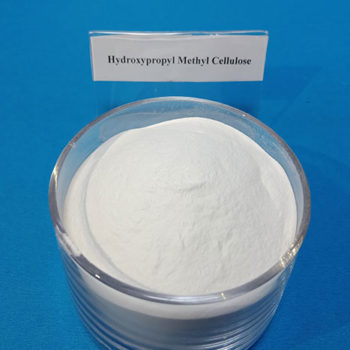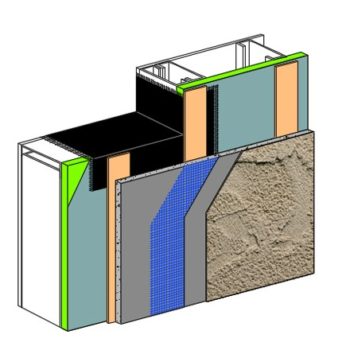Benefits of HPMC 2906 in Sustained-Release Drug Formulations
The Role of HPMC 2906 in Sustained-Release Drug Formulations
Sustained-release drug formulations have revolutionized the field of pharmaceuticals by providing a controlled and prolonged release of drugs into the body. One key ingredient that plays a crucial role in these formulations is Hydroxypropyl Methylcellulose (HPMC) 2906. HPMC 2906 is a cellulose derivative that is widely used in the pharmaceutical industry due to its unique properties and benefits.
One of the primary benefits of HPMC 2906 in sustained-release drug formulations is its ability to control drug release. HPMC 2906 forms a gel-like matrix when it comes into contact with water, which slows down the dissolution of the drug. This matrix acts as a barrier, preventing the drug from being released too quickly into the body. This controlled release is particularly important for drugs that have a narrow therapeutic window or require a prolonged duration of action.
Furthermore, HPMC 2906 offers excellent film-forming properties, making it an ideal choice for coating tablets or pellets in sustained-release formulations. The film coating not only protects the drug from degradation but also provides a barrier that controls the release of the drug. This ensures that the drug is released in a controlled manner, maintaining a steady concentration in the bloodstream and minimizing fluctuations.
Another advantage of HPMC 2906 is its compatibility with a wide range of drugs. It can be used with both hydrophilic and hydrophobic drugs, making it a versatile choice for formulators. This compatibility allows for the development of sustained-release formulations for a variety of therapeutic areas, including cardiovascular, central nervous system, and gastrointestinal disorders.
In addition to its compatibility, HPMC 2906 also offers good compressibility and flow properties, making it suitable for tablet formulations. Tablets containing HPMC 2906 can be easily manufactured using conventional tabletting techniques, ensuring a smooth and efficient production process. This ease of manufacturing is a significant advantage for pharmaceutical companies, as it reduces production costs and increases productivity.
Moreover, HPMC 2906 is a non-toxic and biocompatible polymer, making it safe for use in pharmaceutical formulations. It has been extensively tested and approved by regulatory authorities worldwide, ensuring its suitability for use in sustained-release drug formulations. This safety profile is crucial in the development of pharmaceutical products, as patient safety is of utmost importance.
In conclusion, HPMC 2906 plays a vital role in sustained-release drug formulations due to its ability to control drug release, film-forming properties, compatibility with a wide range of drugs, ease of manufacturing, and safety profile. These benefits make it an excellent choice for formulators looking to develop sustained-release formulations that provide controlled and prolonged drug release. With the increasing demand for sustained-release formulations in the pharmaceutical industry, HPMC 2906 continues to be a valuable ingredient that contributes to the success of these formulations.
Formulation Techniques Utilizing HPMC 2906 for Sustained-Release Drugs
The formulation of sustained-release drugs is a critical aspect of pharmaceutical development. These drugs are designed to release their active ingredients slowly over an extended period, providing a controlled and consistent therapeutic effect. One commonly used excipient in the formulation of sustained-release drugs is Hydroxypropyl Methylcellulose (HPMC) 2906.
HPMC 2906 is a cellulose derivative that is widely used in the pharmaceutical industry due to its excellent film-forming and gelling properties. It is a hydrophilic polymer that can absorb water and form a gel-like matrix when hydrated. This unique property makes it an ideal choice for formulating sustained-release drug products.
One of the key formulation techniques utilizing HPMC 2906 is the matrix system. In this technique, the drug is uniformly dispersed within a matrix of HPMC 2906. As the matrix hydrates, it forms a gel-like structure that controls the release of the drug. The drug molecules diffuse through the gel matrix, resulting in a sustained and controlled release over time.
The release rate of the drug from the matrix can be modulated by adjusting the concentration of HPMC 2906. Higher concentrations of HPMC 2906 result in a denser gel matrix, which slows down the drug release. Conversely, lower concentrations of HPMC 2906 lead to a less dense matrix and faster drug release. This flexibility in controlling the release rate is a significant advantage of using HPMC 2906 in sustained-release formulations.
Another formulation technique that utilizes HPMC 2906 is the coating system. In this technique, the drug particles are coated with a layer of HPMC 2906. The coating acts as a barrier, preventing the drug from being released immediately upon administration. Instead, the drug is released slowly as the HPMC 2906 coating dissolves or erodes over time.
The coating system offers several advantages, such as improved stability of the drug, protection from degradation, and reduced side effects. It also allows for the customization of drug release profiles by adjusting the thickness of the HPMC 2906 coating. Thicker coatings result in slower drug release, while thinner coatings lead to faster release.
In addition to its role in sustained-release formulations, HPMC 2906 also offers other benefits. It enhances the flow properties of powders, making them easier to process during manufacturing. It also improves the compressibility of tablets, ensuring uniform drug content and consistent release profiles.
Furthermore, HPMC 2906 is compatible with a wide range of drugs and excipients, making it a versatile choice for formulation development. It is also considered safe for oral administration, as it is non-toxic and non-irritating to the gastrointestinal tract.
In conclusion, HPMC 2906 plays a crucial role in the formulation of sustained-release drugs. Its unique properties make it an excellent choice for matrix and coating systems, allowing for controlled and consistent drug release. Its compatibility with various drugs and excipients, as well as its safety profile, further contribute to its popularity in the pharmaceutical industry. As pharmaceutical development continues to advance, HPMC 2906 will likely remain a key component in the formulation of sustained-release drug products.
Challenges and Solutions in Incorporating HPMC 2906 in Sustained-Release Drug Formulations
The development of sustained-release drug formulations has revolutionized the field of pharmaceuticals, allowing for controlled and prolonged drug release, which in turn improves patient compliance and therapeutic outcomes. One of the key ingredients used in these formulations is Hydroxypropyl Methylcellulose (HPMC) 2906, a cellulose derivative that offers a range of benefits in terms of drug release and stability. However, incorporating HPMC 2906 into sustained-release drug formulations is not without its challenges.
One of the main challenges in formulating sustained-release drugs with HPMC 2906 is achieving the desired drug release profile. The release of a drug from a formulation is influenced by various factors, including the drug’s solubility, the polymer’s viscosity, and the drug-polymer interaction. HPMC 2906 is known for its high viscosity, which can hinder drug release if not properly controlled. To overcome this challenge, formulators need to carefully select the appropriate grade of HPMC 2906 and optimize its concentration in the formulation. Additionally, they may need to incorporate other excipients or modify the manufacturing process to achieve the desired drug release profile.
Another challenge in incorporating HPMC 2906 in sustained-release drug formulations is maintaining the stability of the formulation. HPMC 2906 is hygroscopic, meaning it has a tendency to absorb moisture from the environment. This can lead to changes in the physical properties of the formulation, such as increased viscosity or decreased drug release. To address this challenge, formulators need to carefully control the moisture content during the manufacturing process and ensure proper packaging and storage conditions. They may also need to consider the use of moisture-barrier coatings or other protective measures to enhance the stability of the formulation.
Furthermore, the compatibility of HPMC 2906 with other excipients and active pharmaceutical ingredients (APIs) can pose a challenge in sustained-release drug formulations. Some APIs may interact with HPMC 2906, leading to changes in drug release or stability. Incompatibilities can also arise between HPMC 2906 and other excipients, such as plasticizers or fillers, which can affect the overall performance of the formulation. To address these challenges, formulators need to conduct compatibility studies to identify any potential interactions and select excipients and APIs that are compatible with HPMC 2906. They may also need to consider the use of co-solvents or other strategies to enhance compatibility.
Despite these challenges, there are several solutions available to overcome them and successfully incorporate HPMC 2906 in sustained-release drug formulations. Formulators can leverage the extensive knowledge and experience gained over the years to optimize the formulation parameters, such as polymer concentration, drug loading, and manufacturing process. They can also utilize advanced analytical techniques to study the drug release kinetics and ensure the desired release profile is achieved. Additionally, the use of novel drug delivery technologies, such as microencapsulation or nanoparticles, can further enhance the performance of HPMC 2906-based sustained-release formulations.
In conclusion, HPMC 2906 plays a crucial role in the development of sustained-release drug formulations. However, formulating with HPMC 2906 presents challenges related to achieving the desired drug release profile, maintaining stability, and ensuring compatibility with other excipients and APIs. By carefully selecting the appropriate grade of HPMC 2906, optimizing formulation parameters, and utilizing advanced analytical techniques, formulators can overcome these challenges and harness the full potential of HPMC 2906 in sustained-release drug formulations.
Q&A
1. What is the role of HPMC 2906 in sustained-release drug formulations?
HPMC 2906 acts as a hydrophilic polymer that controls the release of drugs over an extended period of time.
2. How does HPMC 2906 achieve sustained-release in drug formulations?
HPMC 2906 forms a gel-like matrix when hydrated, which slows down the diffusion of drugs and prolongs their release.
3. What are the advantages of using HPMC 2906 in sustained-release drug formulations?
HPMC 2906 offers improved drug stability, enhanced bioavailability, and reduced dosing frequency, leading to better patient compliance and therapeutic outcomes.



